London’s more affluent boroughs enjoy higher levels of tree canopy coverage than less affluent ones, an analysis of available data shows.
The top and bottom 10 boroughs for gross disposable household income (GDHI) rank similarly for percentage tree canopy cover, revealing a general correlation between the two measures.
The analysis sheds light on the way unequal access to, and enjoyment of, the benefits of London’s eight million trees reflects and exacerbates systemic urban inequalities in the capital.
Islington Council‘s tree planting and engagement officer, and Hackney-based charity Tree Musketeers trustee Marcelo White said: “We couldn’t imagine London without trees, but the trees in the city aren’t equally shared.”
Comparing GDHI data from 2022 with tree canopy coverage data from the same year, the seven London boroughs of Kensington and Chelsea, Westminster, Camden, Richmond, Wandsworth, Islington, and Barnet all ranked in the top 10 for both measures (see interactive Fig.1).
Similarly, the six boroughs of Sutton, Redbridge, Havering, Bexley, Newham, and Barking and Dagenham, fell in the bottom 10 for both.
The correlation showstree canopy coverage reflects affluence in the city, with a greater percentage of coverage in boroughs with higher levels of disposable income.
Trees are essential in urban environments, providing shade and shelter, cleaning and calming the air, cooling streets, reducing flooding, dampening noise, and improving health and wellbeing.
Inequitable access to the benefits of trees further exacerbates urban inequalities, as in areas of lower tree cover there is a direct link to higher pollution and poorer air quality which increases the risk of health conditions including cancer, asthma, stroke, heart disease, diabetes and obesity.
Trees for Cities development and partnerships director Carrie Hume said: “The data shows that communities most in need of trees for health and climate resilience purposes have the least existing tree cover, and those are the places that need the most focused attention and investment.
“We need to increase tree cover massively across the UK to recognise that everyone has a right to live amongst trees, so they can breathe easy, take shade from the heat and connect with nature.”
The 2022 tree coverage data, which was published last year, used colour and infrared aerial imagery and machine learning to map canopy cover.
It followed a similar survey done in 2016 and comparing the two datasets further revealed the 10 most affluent boroughs saw an average increase of 1.5% canopy cover in six years, whereas the 10 least affluent boroughs saw a general decrease of -4.5% (see interactive Fig. 2).
The comparison showed London’s total tree canopy coverage also decreased from 21% to 19.6% between 2016 and 2022.
A spokesperson for Mayor of London Sadiq Khan said: “The mayor has an ambitious target for a 10% increase in canopy cover across the capital by 2050, and is co-ordinating the London Urban Forest Partnership to protect and support our woodland areas.
“This is all part of his work to continue building a better, greener London for everyone.”
The relationship between affluence and tree cover
White explained how the correlation between tree canopy cover and affluence becomes a complex interplay of structural inequalities, varied resources and funding, and inherited coverage from historic tree planting.
Areas with a relatively high percentage of canopy cover today benefit from planting undertaken decades, if not centuries ago.
Mature, well-established trees with large canopies, like the infamous London Plane, are more common on streets in affluent boroughs, such as Kensington and Chelsea, Westminster, and Camden.
These trees increase the desirability and value of properties, attracting wealthier residents.
White said: “Nobody alive today can take credit for any of the canopy cover in London.
“You plant trees and affluence comes.
“Plant a road with trees and it increases the market value of the whole road.”
Tree planters like White refer to trees as street furniture.
Just like benches or street lights, they are installed and maintained by the council as assets, with each tree having a monetary value reflecting its amenity contribution as a public asset based on factors like location, positive attributes and life expectancy.
Mature trees are valued higher, meaning councils with greater numbers of mature trees can raise more money from these trees as assets than councils where the majority of trees are younger and less valuable.
The total value of Camden’s trees is £331,797,792 with 69% of the borough’s trees classifying at veteran, mature or semi-mature.
Mature trees also attract protections either by Conservation Area designation or Tree Preservation Orders (TPO), inhibiting them from being felled.
Fewer protections make removing trees easier, and less affluent boroughs with larger populations and cheaper land see greater levels of development, with trees felled as a result.
Hackney, a middling borough for both GDHI (£31,388) and canopy cover (18%), saw a 4.6% decrease in canopy coverage between 2016 and 2022.
White said: “Hackney’s doing a big push on new builds at the moment.
“A lot of canopy cover has been lost.”
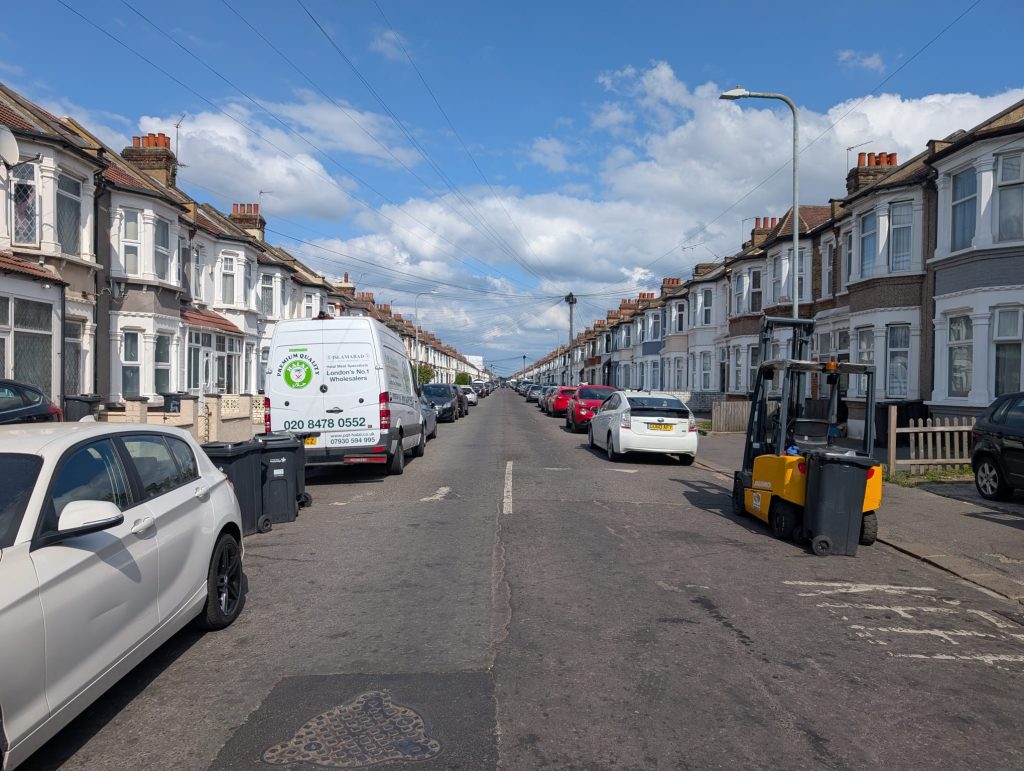
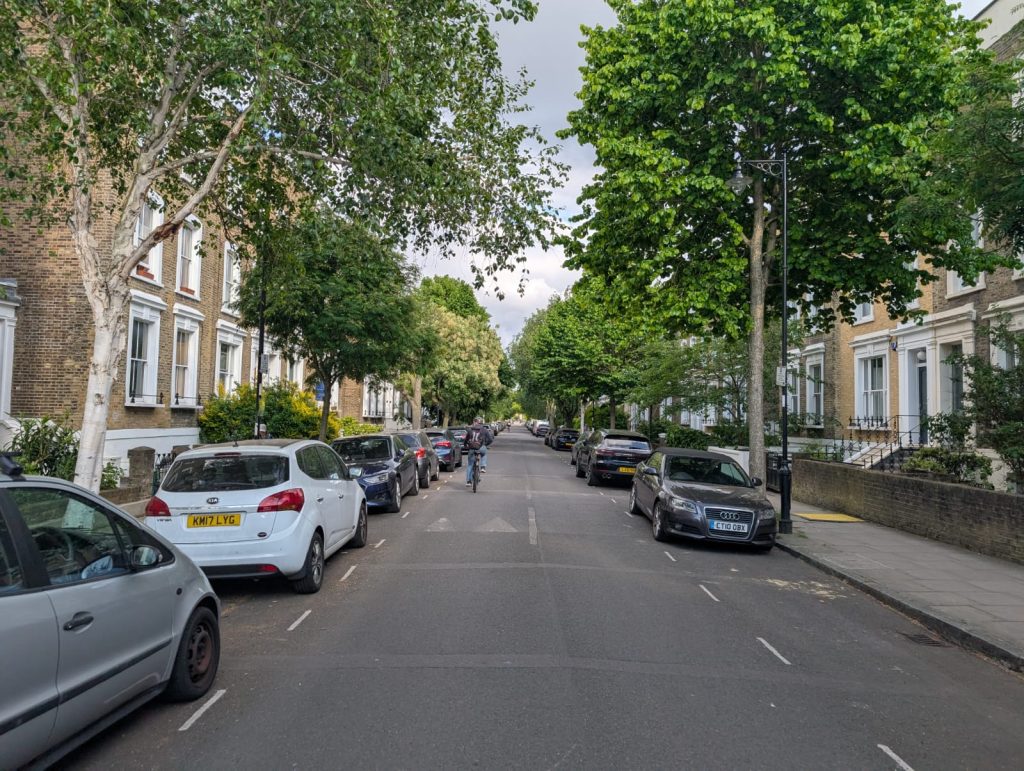
White’s Islington tree team is well-funded and resourced, with each officer responsible for a different stage of tree management.
But larger, less affluent boroughs tend to have to fewer officers shouldering more responsibilities, even if their boroughs might have larger areas and more trees to care for.
Better-resourced boroughs can, therefore, afford to be proactive in their tree management rather than simply reactive.
Proactive management aims to maintain or increase canopy cover ahead of expected tree loss, such as with succession planting, where a young tree is planted decades ahead of its designated predecessor dying, thereby retaining overall canopy coverage when it is eventually felled.
It’s not as simple as planting more trees
But better-resourced teams in more affluent boroughs do not necessarily have an easier task.
Islington’s central location of mostly buildings and with significant poorly-placed or redundant objects on pavements mean its maximum tree cover capacity is around 30%.
White said: “It’s impossible for Islington to get over 30% canopy cover.
“We’ll never actually be at 30% because we’re always removing trees and planting new ones, which take time to grow.”
With roughly 23% of land in Greater London privately owned, coverage capacity across boroughs is also constrained by the amount of land councils have authority to plant on.
The closer boroughs are to capacity, the harder and more expensive it is to find appropriate places to plant new trees.
A 2020 Greater London Authority report suggested it costs roughly £700 to plant and maintain a street tree for three years.
But because of the constraints in Islington, White explained the cost for the council is over £1,500.
Higher planting costs in inner-city boroughs like Islington are further complicated by hostile soil, meaning many of the woodland trees people recognise and love, aren’t suitable for planting.
White no longer plants common, less expensive trees provided by tree nurseries such as rowan, hazel, birch and oak due to their incompatibility with London’s mostly clay soil, which is now highly amended and compacted.
Boroughs already close to capacity are therefore restricted to the expensive task of creating new areas to plant trees, while maintaining, managing and caring for existing ones.
Camden, the borough with the highest percentage tree canopy coverage in London (28.4%) and fourth-highest for GDHI (£58,440), is leading on engineered highway schemes which enables them to plant in areas which were difficult to plant in before.
In order for the city to increase overall tree coverage, boroughs with open spaces where trees can be planted more cheaply and in greater numbers need to offset the limited capacity of inner-city boroughs like Islington.
GLA funded planting figures up to March last year show this is already underway.
Since 2016, Enfield planted the most trees with over 112,000, followed by Ealing (52,697), Havering (41,596) and Redbridge (34,761) (see interactive Fig. 3).
In comparison, Camden planted 8,613, Islington 4,884, and Kensington and Chelsea 1,788.
A spokesperson for the mayor said: “The mayor has supported the planting of more than 600,000 trees since 2016, including in some of the most tree-deprived areas of the city.”
But tree canopies take many years to fully mature, meaning coverage data won’t show the full results of this planting for decades, if not centuries, yet.
The effect of this natural timescale is coverage data which will continue to show the boroughs with larger numbers of historic and mature trees performing better for years to come, as the canopy volumes of mature trees is many times more than that of newly planted ones.
White said: “Trees like the Planes planted by the Victorians each have a greater contribution than a whole few rows of streets.”
Tree equity and resilience
Measuring tree canopy coverage is important for assessing the health and change of London’s trees, but canopy cover is neither a wholly reliable measure nor the full picture.
Felling trees due to old age, obstruction and danger is an essential part of urban tree management, and most often accompanied by replacement planting of young trees elsewhere.
Coverage data doesn’t capture this balance over short periods, however, as small trees planted as replacements take decades to establish themselves.
White said: “Trees replanted doesn’t equate to canopy cover of the trees lost.
“You have to add 50 years for that.”
Trees are also in a constant process of management and maintenance, losing canopy to pruning and trimming, whilst freshly planted new trees often don’t grow canopies large enough to be captured by aerial imagery.
Even in mature trees, the size of canopies varies greatly between species.
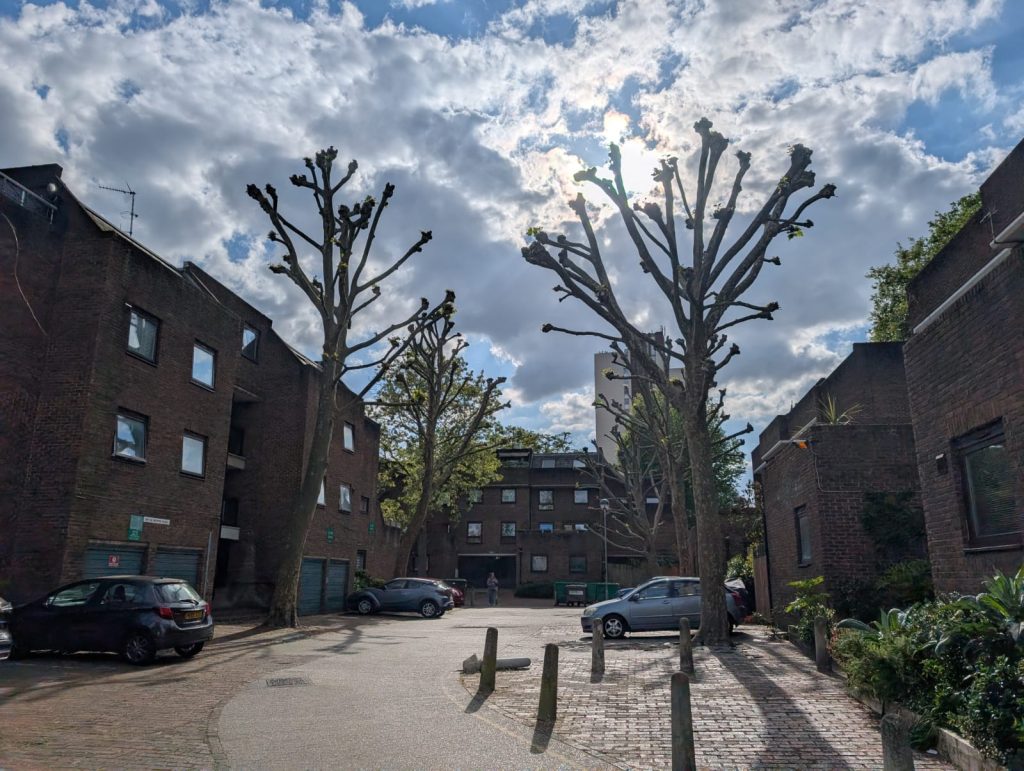
In order to tackle the environmental, social and health inequalities that that stem from unequal access to trees, White suggested it’s better to think in terms of tree equity, prioritising the location and accessibility of trees and their benefits to people, especially in less affluent areas.
White said: “In a woodland or park, if a tree falls down it’s still a green space.
“On the street, if a tree falls down it’s just a pavement.”
Diversifying London’s tree population in also crucial to increasing its overall health and resilience so these benefits last, with planters like White working with nurseries to broaden their stocks to include trees more suitable to London’s compacted clay soil.
He said: “We’re reliant on nurseries for our tree stock, but the trees that I really want to be experimenting with to plant, I currently can’t actually get.”
But it’s not only councils which bear the responsibility of broadening London’s tree population.
Owners of private land in the capital also have a huge role to play in increasing tree canopy coverage, with over a third of potential planting space being privately owned.
White said: “Private gardens play a massive role in canopy cover, so the public has just as much responsibility as the council.”
Those without land to plant can also contribute through one of the city’s many tree planting volunteer schemes, such as Hackney’s Tree Musketeers, or Trees for Cities, or in more simple ways, like watering nearby trees.
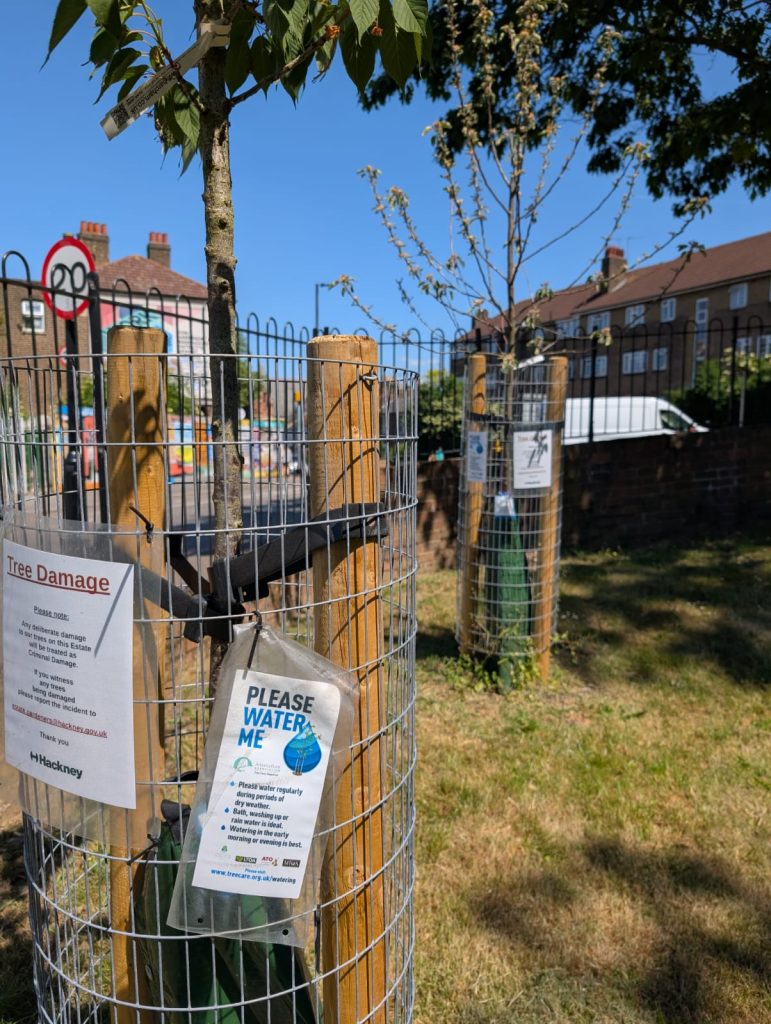
The first step however, is simply to notice the inequality; next time you’re out in London, look at the number and types of trees around you and ask yourself how that might be related to the communities that live in the area.
Feature image: Adam Termote
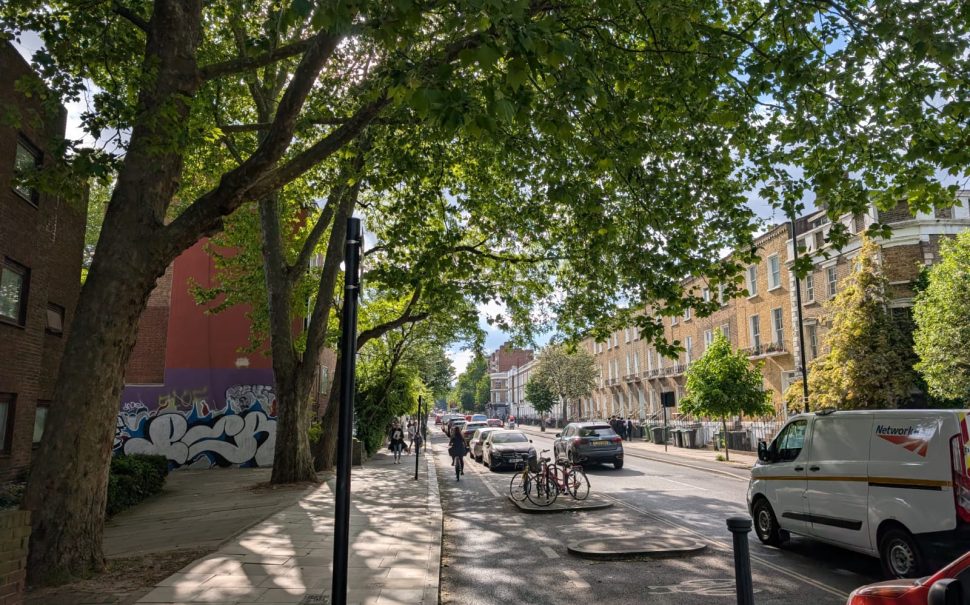

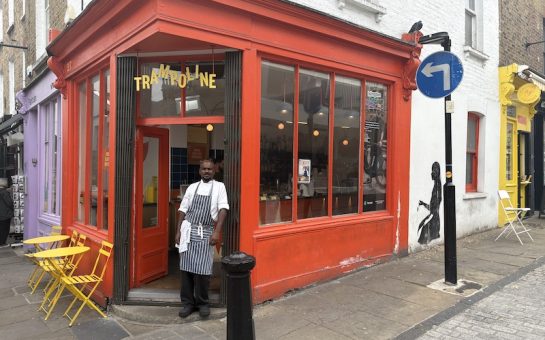

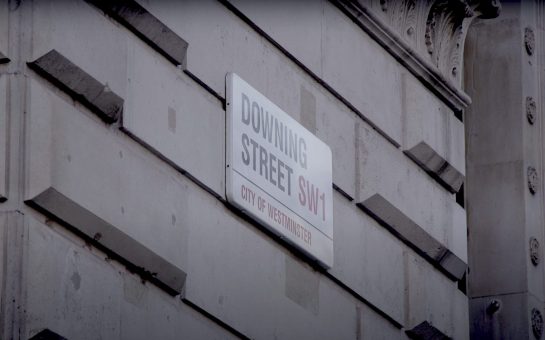
Join the discussion